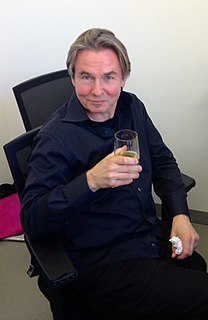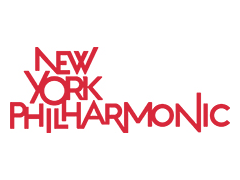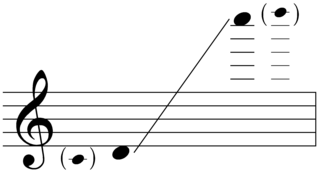EXPO is an orchestral composition by the Finnish composer Magnus Lindberg. It was the first work commissioned by the New York Philharmonic under the conductor Alan Gilbert, and was Lindberg's first commission as the orchestra's composer-in-residence. The piece was first performed on September 16, 2009 at Avery Fisher Hall, New York City, during Alan Gilbert's inaugural concert with the New York Philharmonic. EXPO was the first newly commissioned work to open the New York Philharmonic's concert season since the premiere of Aaron Copland's Connotations under Leonard Bernstein on September 23, 1962.

Esa-Pekka Salonen is a Finnish orchestral conductor and composer. He is principal conductor and artistic advisor of the Philharmonia Orchestra in London, conductor laureate of the Los Angeles Philharmonic, and music director-designate of the San Francisco Symphony.

Verklärte Nacht, Op. 4, is a string sextet in one movement composed by Arnold Schoenberg in 1899. Composed in just three weeks, it is considered his earliest important work. It was inspired by Richard Dehmel's poem of the same name, combined with the influence of Schoenberg's strong feelings upon meeting Mathilde von Zemlinsky, whom he would later marry. The movement can be divided into five distinct sections which refer to the five stanzas of Dehmel's poem; however, there are no unified criteria regarding movement separation.
The Hollywood String Quartet (HSQ) was an American string quartet founded by violinist/conductor Felix Slatkin and his wife cellist Eleanor Aller. The Hollywood String Quartet is considered to be the first American-born and trained classical music chamber group to make an international impact, mainly through its landmark recordings. These recordings have long been regarded as among the most outstanding recorded performances of the string quartet repertoire.
Tevot is a one-movement symphony for orchestra by the British composer Thomas Adès. The work was commissioned by the Berlin Philharmonic and Carnegie Hall. The world premiere was given by the Berlin Philharmonic under the direction of Simon Rattle at the Berliner Philharmonie on February 21, 2007. The United States premiere was given by the same ensemble at Carnegie Hall on November 14, 2007.
The Second Concerto for Orchestra is a concerto for orchestra by the American composer Steven Stucky. The work was commissioned by the Los Angeles Philharmonic while Stucky was their composer-in-residence for the inaugural season of the Walt Disney Concert Hall. It was completed in 2003 and was first performed on March 12, 2004, with the conductor Esa-Pekka Salonen leading the Los Angeles Philharmonic. The piece was awarded the 2005 Pulitzer Prize for Music.
Rhapsodies for Orchestra is a single-movement orchestral composition by the American composer Steven Stucky. The work was jointly commissioned by the New York Philharmonic and the BBC for the Philharmonic's European tour in August and September 2008. The piece had its world premiere August 28, 2008 in Royal Albert Hall at The Proms, with the New York Philharmonic performing under conductor Lorin Maazel.
The Piano Concerto No. 2 is a composition for solo piano and orchestra by the Finnish composer Magnus Lindberg. The work was jointly commissioned by the Royal Concertgebouw Orchestra, the Gothenburg Symphony Orchestra, and the New York Philharmonic, for which Lindberg was then composer-in-residence. It was given its world premiere at Avery Fisher Hall on May 3, 2012 by the pianist Yefim Bronfman and the New York Philharmonic under the direction of Alan Gilbert.
The Cello Concerto No. 2 is the second cello concerto by the Finnish composer Magnus Lindberg. It was commissioned by the Los Angeles Philharmonic in June 2013 to fill the planned premiere date of Oliver Knussen's then delayed Cello Concerto. The work was first performed in the Walt Disney Concert Hall, Los Angeles, on October 18, 2013 by the Finnish cellist Anssi Karttunen and the Los Angeles Philharmonic under the direction of Esa-Pekka Salonen.
Souvenir is a composition for chamber orchestra by the Finnish composer Magnus Lindberg. The work was commissioned by the New York Philharmonic, for which Lindberg was then composer-in-residence. It was given its world premiere on November 19, 2010 at Symphony Space, New York City, by the New York Philharmonic under the direction of Alan Gilbert. The piece was written in memoriam for Lindberg's friend and fellow composer Gérard Grisey.
The Concerto for Orchestra is an orchestral composition by the Finnish composer Magnus Lindberg. The work was commissioned by the BBC and was composed between 2002 and 2003. It was given its world premiere by the BBC Symphony Orchestra under the direction of Jukka-Pekka Saraste on September 30, 2003 at the Barbican Centre, London.
Kraft is a composition for solo ensemble, electronics, and orchestra by the Finnish composer Magnus Lindberg. The work was commissioned by the Helsinki Festival and was first performed on September 4, 1985 by the Toimii ensemble and the Finnish Radio Symphony Orchestra under the direction of Esa-Pekka Salonen. The piece was awarded the International Rostrum of Composers in 1986 and won the Nordic Council Music Prize in 1988.
The Concerto for Piano and Orchestra is the first piano concerto by the Finnish composer Magnus Lindberg. The work was commissioned by the Helsinki Festival on September 4, 1991 and completed in 1994. It is dedicated to the pianist Paul Crossley.
Fresco is an orchestral composition by the Finnish composer Magnus Lindberg. The work was commissioned by the Los Angeles Philharmonic. Its world premiere was given in Los Angeles on March 12, 1998 by the Los Angeles Philharmonic under the direction of Esa-Pekka Salonen, to whom the piece is dedicated.
The Violin Concerto No. 2 is a composition for violin solo and orchestra by the Finnish composer Magnus Lindberg. The work was jointly commissioned by the London Philharmonic Orchestra, the Berlin Philharmonic, Swedish Radio Symphony Orchestra, Radio France, and New York Philharmonic. Its world premiere was given by the violinist Frank Peter Zimmermann and the London Philharmonic Orchestra under the direction of Jaap van Zweden at Royal Festival Hall, London, on December 9, 2015. The piece is dedicated to Zimmermann.
Sculpture is an orchestral composition by the Finnish composer Magnus Lindberg. The music was commissioned by the Los Angeles Philharmonic with support from the Koussevitzky Music Foundation to celebrate the orchestra's inaugural season at the Walt Disney Concert Hall. Its world premiere was given by the Los Angeles Philharmonic under the direction of Esa-Pekka Salonen on October 6, 2005.
Parada is an orchestral composition by the Finnish composer Magnus Lindberg. The piece was composed for the music festival Related Rocks which celebrates the works of Lindberg and related composers. Its world premiere was given at The Anvil, Basingstoke on February 6, 2002 by the Philharmonia Orchestra under the direction of Esa-Pekka Salonen, to whom the work is dedicated.
Two Episodes is a composition for orchestra by the Finnish composer Magnus Lindberg. The work was commissioned by the London Philharmonic Orchestra, for which Lindberg is composer-in-residence, and co-commissioned by The Proms, the Helsinki Festival, and the Casa da Música. It was first performed by the London Philharmonic Orchestra under the direction of Vladimir Jurowski in the Royal Albert Hall, London, on July 24, 2016.
The Symphony No. 3 is a composition for orchestra by the American composer Ned Rorem. The work was first performed by the New York Philharmonic under the direction of Leonard Bernstein at Carnegie Hall on April 16, 1959.













